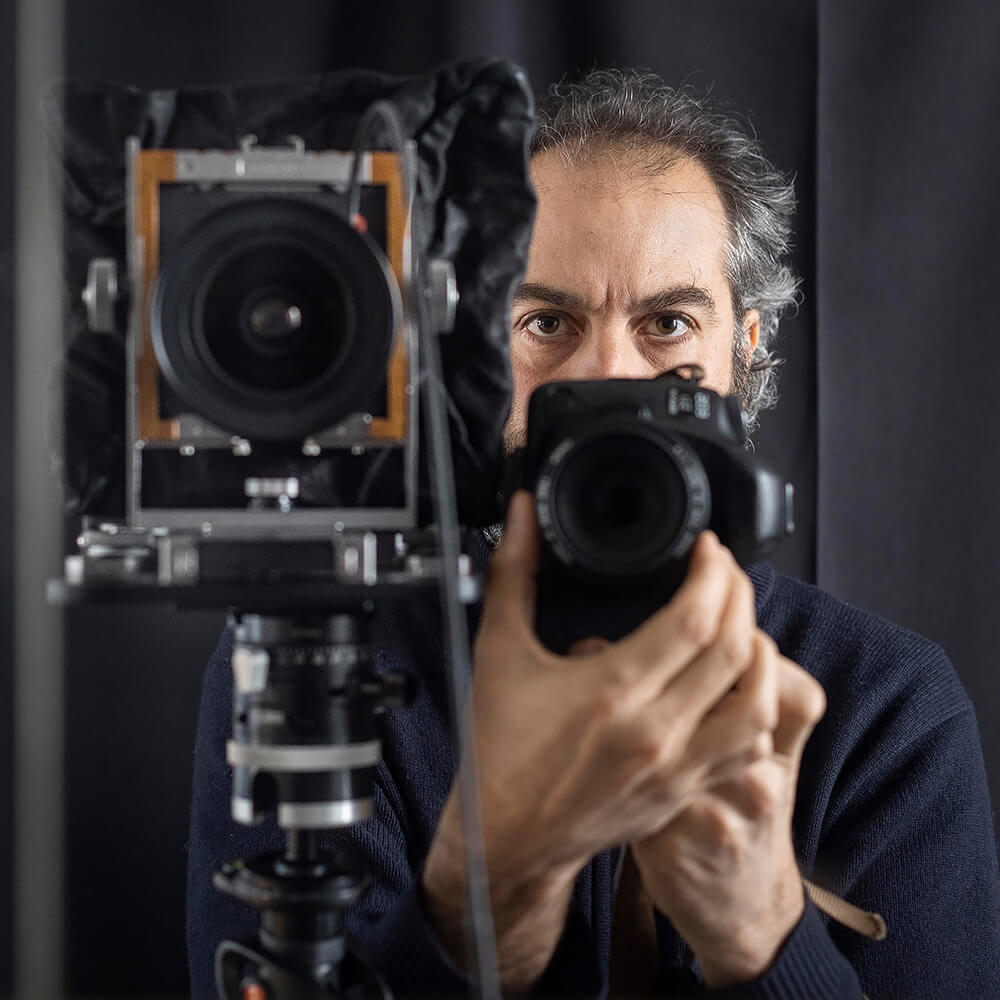Trained as an architect, the photographer's work primarily revolves around the city—its form, transformations, imprints, empty spaces, and the human behaviors it elicits.
In 2006, his inaugural exploration of Chinese cities debuted at the Rencontres Internationales de la Photographie in Arles under the artistic direction of Raymond Depardon. He became a member of the Picturetank cooperative agency in 2007, remaining with them until its closure in 2017. In 2010, as part of the France 14 group, he presented "Travelling to the Outskirts," a project delving into the landscapes of mass housing in Île-de-France.
Since 2011, his research has extended to the role of plants not only in the urban setting but also in rural landscapes. Presently, he is immersed in the creation of a 4x5 medium format collection, affording him a deliberate examination of urban transformations in both Asia and France. Additionally, he is engaged in a more artistic body of work, blending drawing, engraving, and photography.
AWARDS and RESIDENCIES
Winner Prix HSBC 2021
Shortlisted for the Camera Clara award, 2020
Mutation Residency. Transit/ Montpellier city 2019
ND Award 2018 1rst price.
Shortlisted for the Camera Clara award, 2018
1rst price Singularlens 2018
Laureate of the « Albums du Muséum National d’Histoire Naturelle » grant, 2014
Laureate visa de l’ANI 2012, Promenades Photographiques de Vendôme
Shorlisted at the HSBC photography award, 2011
Laureate of the Visas de l’ANI, 2006
Villa Tamaris residency, Seyne sur Mer, 2006
CHONGQING, on the four shores of passing times
Chongqing municipality, People’s Republic of China, population of 34 million.
One of the world’s highest demographic and economic growth rates.
The central urban area of 15 million souls is infused by almost 300 000 newcomers every year.
Chongqing, the ''Mountain City,'' at the confluence of the Yangtze and Jialang Rivers, struggles to break through the fog that covers it all year long.
Heir to the displaced from the Three Gorges dam and daughter to the Beijing authorities – who upgraded her to a municipality, raising her up to the same heights as her big sisters on the East coast – Chongqing has developed at a dizzying speed. Urban forms and infrastructure have sprung up, gravity-defying, embracing the shorelines of its four banks, each of them steeply carved out by the current of the water. The speed of urbanization has outperformed overtaken the slow rhythm of the fishermen, the erosion of the rivers, the powerful hatching of the mountains.
The uninterrupted dance of the cranes and the excavators stack people ever higher in an unsettling quickness. No obstacle remains to stop the skyscrapers from surging up. They reproduce themselves almost identically, like metastases. The transport networks cross the water, pierce through the rock, and climb the hills, defiant of the power of the elements. The river has become the artery that the makes beat an economic heart that is resolutely turned towards the economic conquest of the West by way of the new silk road.
Only the banks, almost wild, resist, remaining allied with the river and its caprices. People sitting on its embankments watch it meander, watch their sightlines get blocked out and its banks grow thicker. Here and there they still cultivate a few food-producing gardens while they wait fatalistically for the last bits of bare land to disappear.
